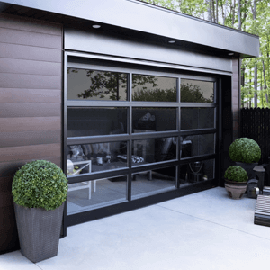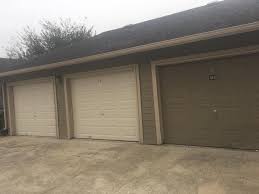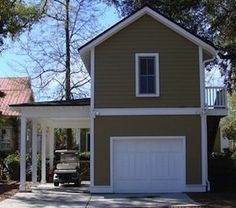
Creating a granny flat out of a garage is an affordable way to add an extra living space to your home. You must ensure that you have sufficient ventilation, adequate insulation, and enough lighting. This is the key to your success. This will not only keep the interiors warm and dry, but also protect you from the elements.
You will want to make sure your project is a success by planning the garage to granny apartment designs well in advance. Although it may seem an easy task, conversion of a carport is not always straightforward. You will need to plan the layout of the new structure, the parking requirements, and whether you want to add any features. You may even need to modify the exterior of your house in order to accommodate the new structure.
To ensure your home is safe, the garage-to-ganny flat design must comply with many building regulations. These include the Occupation Certificate (Oct. Code) and the Residential Code (R. Codes). In addition, you'll need to consider water ingress, fire safety, and insulation.

There are many options for designing a granny apartment that meets your needs. ADU designers can be very helpful as they know how to make the most out of small spaces. Also, if you are going to be constructing an outdoor living area, you may want to think about landscape design to maintain privacy. Whether you decide to install a pool or a garden, landscaping can be an important factor in creating a comfortable and private living space for you and your family.
You might also consider a self-contained unit. These are usually studio apartments, built on top an existing garage. However, there might be property restrictions that prohibit the garage from being used as a living space.
To build your own granny flat or garage, follow the instructions of the manufacturer and comply with all applicable regulations. In addition to building a functional space you will also need to consider installing wall-mounted lights fixtures, roofs, and adhesive sealant.
Consult a professional designer to ensure your project is successful. You might need to design a floor plan, layout or replace an old wide door with a lockable, modern model. You'll also have to consider privacy and where you want your stairs to be placed. Lastly, you will need to consider electrical and plumbing work. Because they will be installing wet areas, it is crucial to have a licensed electrician as well as a plumber on the job.

The Occupation Certificate is an official document that demonstrates the legality of your property. You will need an approved certifier to obtain this certificate. Also, your plans and any other documents that prove that you are a homeowner, are required.
FAQ
Why remodel my house when I could buy a new home?
It's true that houses get cheaper yearly, but you're still paying for the same square footage. You will pay more for the extra square footage, even though you might get more bang for you buck.
It's cheaper to maintain a house without much maintenance.
Remodeling can save you thousands over buying a new house.
You can transform your existing home to create a space that suits you and your family's lifestyle. You can make your home more comfortable for you and your family.
What is the difference of a remodel and renovation?
Remodeling is any major transformation of a room or portion of a bedroom. A renovation involves minor changes to a specific room or part of it. A bathroom remodel can be a large project while an addition to a sink faucet can be a small project.
Remodeling involves replacing a complete room or a part of a entire room. Renovating a room is simply changing one aspect of it. For example, a kitchen remodel involves replacing counters, sinks, appliances, lighting, paint colors, and other accessories. You could also update your kitchen by painting the walls, or installing new light fixtures.
Is $30000 too much for a kitchen redesign?
A kitchen renovation can cost anywhere between $15000 - $35000 depending on how much you want to spend. If you want a complete kitchen overhaul, expect to pay more than $20,000. For less than $3000, you can update appliances, add lighting, and replace countertops.
A full-scale renovation typically costs between $12,000 and $25,000 on average. But there are ways to save money without compromising quality. A new sink can be installed instead of replacing an older one. This will cost you approximately $1000. Or you can buy used appliances for half the price of new ones.
Kitchen renovations take more time than other types. So plan accordingly. It's not ideal to begin working in your kitchen, only to find out halfway through that there isn't enough time to finish the job.
Your best bet is to get started early. Begin by looking at all options and getting estimates from multiple contractors. Next, narrow your options based on price and availability.
Once you've identified potential contractors to work with, ask for their estimates and compare the prices. Sometimes the lowest bid doesn't necessarily mean the best. It is important to find someone with the same work experience as you who will provide a detailed estimate.
Be sure to take into account all additional costs when you calculate the final cost. These may include labor or material charges, permits and so forth. You should be realistic about what you can spend and stick to your spending budget.
Don't be afraid to tell the contractor what you think about any of the quotes. If you don’t like the first bid, let the contractor know and offer to give it another chance. Don't let pride get in the way when you save money.
How much would it take to gut a house and how much to build a brand new one?
A home's contents are removed, such as walls, floors, ceilings and plumbing. It's usually done when you're moving into a new place and want to make some changes before you move in. Due to so many factors involved in the process of gutting a property, it can be very costly. Depending on the job, the average cost of gutting a home is between $10,000 and $20,000
Building a home means that a builder constructs a house piece by piece, then adds windows, doors, cabinets and countertops to it. This is often done after purchasing lots of land. It is usually cheaper than gutting a house and will cost around $15,000 to $30,000.
When it comes down to it, it depends on what you want to do with the space. You'll need to spend more if you plan to gut your home. However, if you want to build a home, you won't have to worry about ripping everything apart and redoing everything. You can build it the way you want it instead of waiting for someone else to come in and tear everything up.
What should you do with your cabinets?
It all depends on whether you are considering renting out your home or selling it. You will need to take down and refinish your cabinets if you are selling. This gives buyers the illusion of brand-new cabinets and helps them visualize their kitchens after they have moved in.
You should not put the cabinets in your rental house. Tenants often complain about having to clean up dishes and fingerprints from previous tenants.
You can also consider painting the cabinets to make them look newer. Just remember to use a high-quality primer and paint. Low-quality primers and paints can crack easily.
Remodeling a kitchen or bathroom is more expensive.
Remodeling a bathroom and kitchen can be costly. It may make more sense to spend money on home improvements, considering how much you pay in energy bills each month.
Small upgrades can help you save thousands of dollars per year. A few simple changes, such as adding insulation to walls and ceilings, can reduce heating and cooling costs by up to 30 percent. Even a small addition can increase comfort and resale values.
It is crucial to consider durability and ease of maintenance when renovating. Materials such as porcelain tile, stainless steel appliances, and solid wood flooring last longer and require fewer repairs than vinyl or laminate countertops.
You may also find that replacing old fixtures with newer models can help cut utility expenses. By installing low-flow faucets, you can lower your water usage up to half a percent. Compact fluorescent bulbs can be replaced with inefficient lighting to reduce electricity consumption by as much as 75 percent.
Statistics
- 5%Roof2 – 4%Standard Bedroom1 – 3% (rocketmortgage.com)
- bathroom5%Siding3 – 5%Windows3 – 4%Patio or backyard2 – (rocketmortgage.com)
- Following the effects of COVID-19, homeowners spent 48% less on their renovation costs than before the pandemic 1 2 (rocketmortgage.com)
- According to a survey of renovations in the top 50 U.S. metro cities by Houzz, people spend $15,000 on average per renovation project. (rocketmortgage.com)
- 57%Low-end average cost: $26,214Additional home value: $18,927Return on investment: (rocketmortgage.com)
External Links
How To
How can you plan a bathroom without breaking the bank?
You must ensure you have the financial ability to pay for any remodeling project. You can't expect to be able pay for it later, so make sure you have enough money.
Planning and understanding the costs of a bathroom remodel requires meticulous planning. Bathroom remodeling projects can be quite costly.
Labor is the largest expense. Costs for labor depend on the size of your job and whether or not you hire a professional. Professional contractors usually charge more per hour than a DIYer because they have experience and expertise.
Materials are another large expense. Prices can vary depending on the material you choose. They may be anywhere between $100 and $1000 per square feet.
The cost of energy is also an important factor. This includes both electricity and gas bills. Peak demand times are when energy prices tend to increase.
It is also important to think about the time needed to complete the job. Bathroom renovations are usually a time-consuming project that requires patience and patience. While some projects can be completed in weeks, others can take up to months.
Other than these three main categories, smaller items such paint, wallpaper, and flooring can add to the project’s overall cost.
Here are some tips to help you choose the right approach for your bathroom remodeling project.
-
Budget Planning - Before you begin any remodel project, it's important to figure out your financial capabilities. It doesn't matter whether you believe you can afford it. The key is to set a realistic budget, so you know exactly where you stand financially.
-
Plan ahead - When possible, schedule your bathroom remodel during the off-season. Lower energy usage in winter means you'll save money on heating or cooling. Consider scheduling your remodel for nighttime when there are fewer people using the bathroom.
-
Shop Around - Once you have determined your budget, you need to look around for potential vendors. There are many options for you. These include local businesses, online sellers, friends, family, and even relatives who may be willing or able to work with your project.
-
Choose an Estimator – Once you have identified all potential vendors, you need to contact each individual for estimates. To get the best pricing possible, you will want to get multiple estimates.
-
Get multiple estimates - Once you have received your initial estimates, compare them to find the best price. Once you have chosen the vendor you want, it is time to ask them for a written estimate.
-
Make Sure To Include All Costs - When preparing an estimate, you should include everything you plan to spend on the project. Make sure to include all fees and taxes that might apply in your area.
-
Don't ignore the small details. While you are planning your bathroom renovation, you must also consider the finer points. For example, do you need a new toilet? Is there enough room to install a shower curtain rod or a shower curtain? These adjustments can easily raise the cost of the project.
-
Consider insurance - Your bathroom remodel will have a significant impact on your insurance coverage. Additional expenses could result if you don’t have adequate coverage.
-
Hire a Professional. You might be able do the job yourself but it's much more enjoyable to have someone else do it.